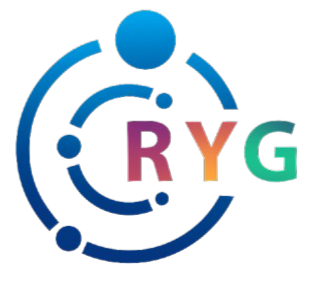Visual storytelling harnesses the power of images to communicate narratives, evoke emotions, and forge cultural connections. Central to this art form are symbols—visual elements that carry layered meanings, bridging cultural, emotional, and narrative dimensions. Understanding how symbols function amplifies viewer engagement and deepens interpretation, transforming simple visuals into compelling stories.
Table of Contents
2. The Concept of Symbols in Communication
3. Educational Foundations: How Symbols Convey Complex Ideas
4. Modern Visual Storytelling: The Digital Age and Symbol Use
5. Symbols in Game Design: Enhancing Player Experience and Engagement
6. Cultural and Mythological Symbols as Narrative Tools
7. The Art of Symbolic Design: Creating Effective Visual Symbols
8. Depth and Nuance: The Unseen Layers of Symbols in Visual Narratives
9. The Cognitive Impact of Symbols: How Viewers Process Visual Symbols
10. Practical Applications and Future Trends in Symbolic Visual Storytelling
11. Conclusion: Unlocking the Power of Symbols to Deepen Narrative Impact
1. Introduction to Visual Storytelling and Symbolism
a. Defining visual storytelling: the power of images in narrative
Visual storytelling is the art of conveying narratives primarily through images, symbols, and visual cues rather than text. It leverages the innate human ability to interpret visual information rapidly, creating emotional connections and immersive experiences. From cave paintings to modern films, images serve as the primary language for storytelling across cultures and eras.
b. The role of symbols: bridging cultural, emotional, and narrative layers
Symbols act as visual shorthand that encapsulate complex ideas, cultural values, and emotional states. For instance, a dove often symbolizes peace globally, while a clenched fist can denote resistance. In narratives, symbols connect viewers to shared cultural knowledge and evoke emotional responses, adding depth to visual stories.
c. Why understanding symbolism enhances viewer engagement and interpretation
A nuanced understanding of symbolism enables viewers to decode layered messages, fostering a more interactive and meaningful experience. Recognizing symbols deepens emotional resonance and encourages viewers to reflect on underlying themes, enriching their engagement with visual narratives.
2. The Concept of Symbols in Communication
a. Historical overview: symbols across different cultures and eras
Throughout history, symbols have served as universal and culturally specific signs. For example, the ancient Egyptian ankh represented life, while the Swastika, originally a symbol of good fortune in many cultures, was later co-opted. Religious symbols like the cross or the crescent moon have conveyed spiritual beliefs for millennia, illustrating the enduring power of visual signs in human communication.
b. The psychology behind symbols: subconscious recognition and meaning
Research shows that humans process symbols subconsciously, activating emotional and cultural associations without conscious awareness. For instance, the color red can evoke urgency or passion, while certain shapes may trigger instinctive responses—highlighting how symbols operate beneath conscious cognition to influence perception.
c. Differentiating between universal and culture-specific symbols
Universal symbols—such as the smiley face or the peace sign—are recognized across cultures, facilitating global communication. Conversely, culture-specific symbols—like the red envelope in Chinese tradition—carry nuanced meanings that require contextual understanding. Recognizing this distinction is crucial for creators aiming to communicate effectively across diverse audiences.
3. Educational Foundations: How Symbols Convey Complex Ideas
a. Symbols as shorthand for concepts: simplifying communication
Symbols condense intricate ideas into visual cues that can be instantly understood. For example, a lightbulb icon often signifies an idea or innovation, streamlining communication in educational and professional contexts.
b. Examples from history: religious, political, and social symbols
Historical symbols like the Christian cross, the hammer and sickle, or the rainbow flag encapsulate complex socio-political or religious narratives. These symbols serve as rallying points, identifiers, or expressions of identity, illustrating their role in shaping collective understanding.
c. The importance of context in interpreting symbols
Context determines a symbol’s meaning; a swastika, for example, has vastly different connotations depending on cultural background. Misinterpretation can lead to misunderstanding, emphasizing the need for careful contextual placement in visual storytelling.
4. Modern Visual Storytelling: The Digital Age and Symbol Use
a. The evolution from traditional to digital symbols in media
Digital media has expanded the repertoire of symbols, blending static icons with dynamic, interactive elements. Emojis, app icons, and social media badges exemplify new forms of symbolic language that facilitate instant recognition and emotional expression across platforms.
b. Case study: le zeus and the use of symbols in contemporary gaming visuals
In modern gaming, symbols are meticulously crafted to evoke myth, adventure, and mystery. For instance, visual motifs like lightning bolts or mythological creatures help immerse players in narratives that blend contemporary design with timeless symbolism. Such use of symbols enhances storytelling by providing instant narrative cues that resonate with players’ cultural knowledge.
c. How modern design employs symbols to create immersive narratives
Designers utilize symbols to build worlds that feel authentic and layered. Iconography, color schemes, and character motifs work together to tell stories visually, often encoding hidden meanings accessible to attentive viewers or players, thus enriching the experience.
5. Symbols in Game Design: Enhancing Player Experience and Engagement
a. How symbols function as clues and narrative devices in games
In games, symbols serve as visual clues that guide players through puzzles, storylines, and character development. They often encode lore or objectives, making gameplay more intuitive and immersive.
b. The example of “Myth-taken Identity” bonus: use of FS symbols and Mystery Meter
In slot games like le zeus, symbols such as FS (Free Spin) icons and Mystery Meters serve as narrative devices. They provide visual cues for bonus triggers, building anticipation and guiding player choices, thus deepening engagement and storytelling depth.
c. The role of character design and symbols in storytelling (e.g., the cunning smirk)
Character expressions, like a cunning smirk, are symbolic tools conveying personality traits beyond dialogue. These visual cues quickly communicate motives and enhance narrative richness in both games and other media.
6. Cultural and Mythological Symbols as Narrative Tools
a. Irish tradition: the four-leaf clover as a symbol of luck and its narrative implications
The four-leaf clover, rooted in Irish folklore, symbolizes luck and hope. Its rare occurrence makes it a powerful narrative element in stories about fortune, destiny, or protection, exemplifying how cultural symbols shape storytelling themes.
b. Mythological symbols: their storytelling significance and emotional resonance
Mythological symbols like the Greek owl (wisdom) or Norse runes carry deep emotional and cultural weight. They evoke shared mythic stories, enriching narratives with layers of meaning that resonate across generations.
c. How symbols root stories in cultural identity and shared understanding
Symbols serve as cultural anchors, embedding stories within collective identities. They facilitate shared understanding and continuity, making stories accessible and meaningful within cultural contexts.
7. The Art of Symbolic Design: Creating Effective Visual Symbols
a. Principles of designing recognizable and meaningful symbols
Effective symbols are simple, memorable, and contextually appropriate. Principles include clarity, scalability, and cultural sensitivity. For instance, the lightning bolt in le zeus visually evokes myth and power.
b. Balancing simplicity and depth to serve storytelling goals
A well-designed symbol balances minimalism with layered meaning. Too complex, and it loses recognition; too simple, and it lacks depth. Successful symbols like the mythic thunderbolt combine iconic shape with cultural resonance.
c. Case example: designing symbols for le zeus to evoke myth and modernity
Designers craft symbols that fuse ancient mythological motifs with contemporary aesthetics. For example, combining classical Greek elements with sleek, modern lines creates visuals that evoke timeless power while appealing to modern audiences.
8. Depth and Nuance: The Unseen Layers of Symbols in Visual Narratives
a. Subtle symbolism: how minor details enrich storytelling
Minor visual details—like a faded emblem or hidden motif—can add layers of meaning. Such subtle elements reward attentive viewers, creating a richer narrative experience.
b. Non-obvious symbols and their interpretative potential
Non-obvious symbols, such as background patterns or character accessories, can carry symbolic weight that hints at deeper themes or foreshadows plot developments.
c. The use of progressive tools like Mystery Meter to reveal hidden layers
Tools like Mystery Meter in games or interactive media quantify uncertainty and reveal hidden narrative layers, encouraging exploration of symbolic depth.
9. The Cognitive Impact of Symbols: How Viewers Process Visual Symbols
a. The subconscious recognition process and memory retention
Research indicates that symbols activate subconscious recognition pathways, leading to stronger memory retention. Iconic symbols like logos are stored in long-term memory, influencing future perception and decision-making.
b. Emotional responses triggered by symbolic imagery
Symbols evoke emotions through associations; for example, a dark silhouette might trigger fear or mystery, while bright, warm colors can inspire hope. These emotional responses amplify storytelling impact.
c. Enhancing storytelling through strategic symbol placement
Placing symbols strategically within visuals guides emotional and cognitive responses. For example, revealing a key symbol at a pivotal moment heightens its narrative significance.



Leave a Reply